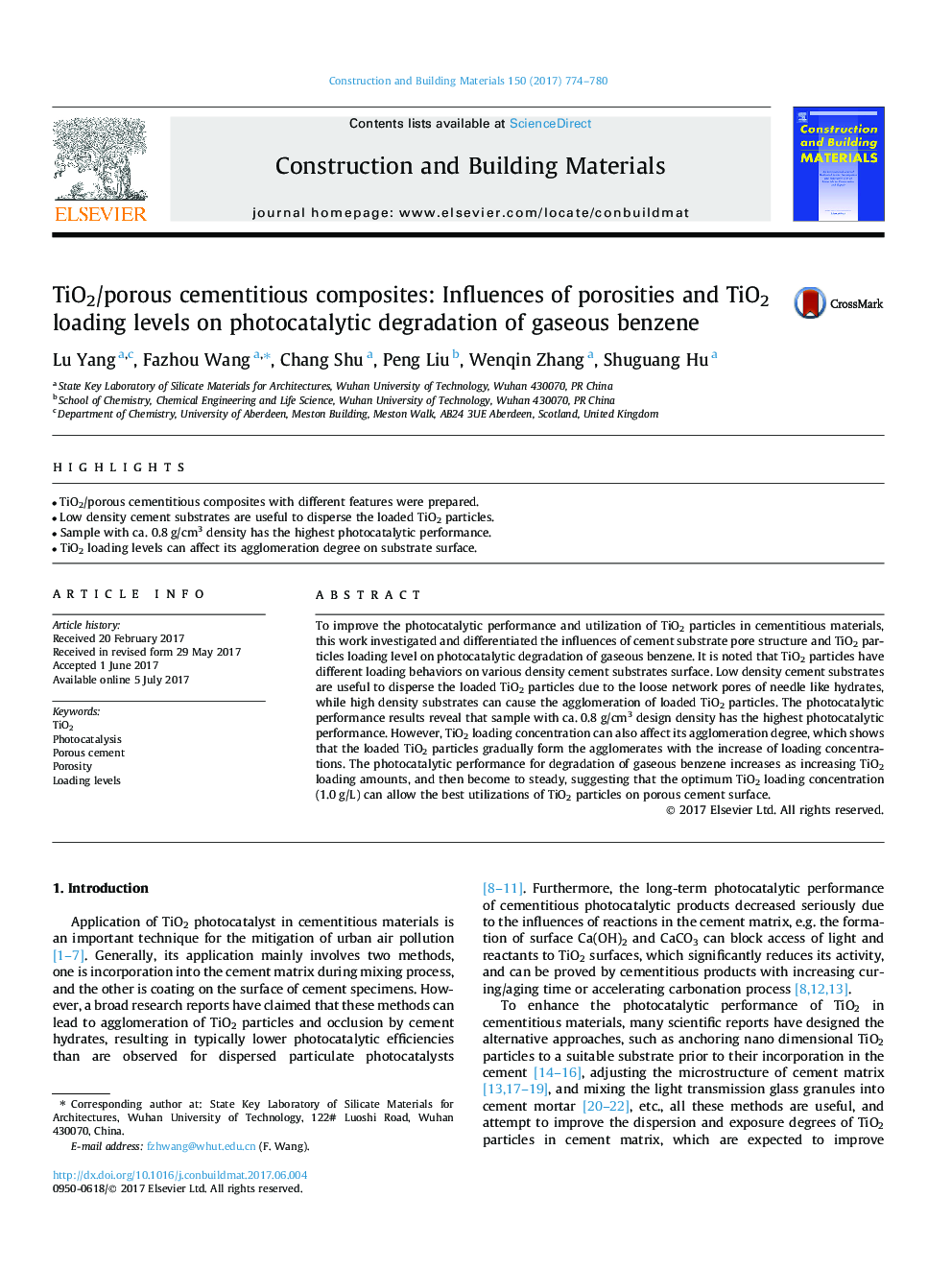| Article ID | Journal | Published Year | Pages | File Type |
|---|---|---|---|---|
| 4918331 | Construction and Building Materials | 2017 | 7 Pages |
Abstract
To improve the photocatalytic performance and utilization of TiO2 particles in cementitious materials, this work investigated and differentiated the influences of cement substrate pore structure and TiO2 particles loading level on photocatalytic degradation of gaseous benzene. It is noted that TiO2 particles have different loading behaviors on various density cement substrates surface. Low density cement substrates are useful to disperse the loaded TiO2 particles due to the loose network pores of needle like hydrates, while high density substrates can cause the agglomeration of loaded TiO2 particles. The photocatalytic performance results reveal that sample with ca. 0.8Â g/cm3 design density has the highest photocatalytic performance. However, TiO2 loading concentration can also affect its agglomeration degree, which shows that the loaded TiO2 particles gradually form the agglomerates with the increase of loading concentrations. The photocatalytic performance for degradation of gaseous benzene increases as increasing TiO2 loading amounts, and then become to steady, suggesting that the optimum TiO2 loading concentration (1.0Â g/L) can allow the best utilizations of TiO2 particles on porous cement surface.
Keywords
Related Topics
Physical Sciences and Engineering
Engineering
Civil and Structural Engineering
Authors
Lu Yang, Fazhou Wang, Chang Shu, Peng Liu, Wenqin Zhang, Shuguang Hu,
